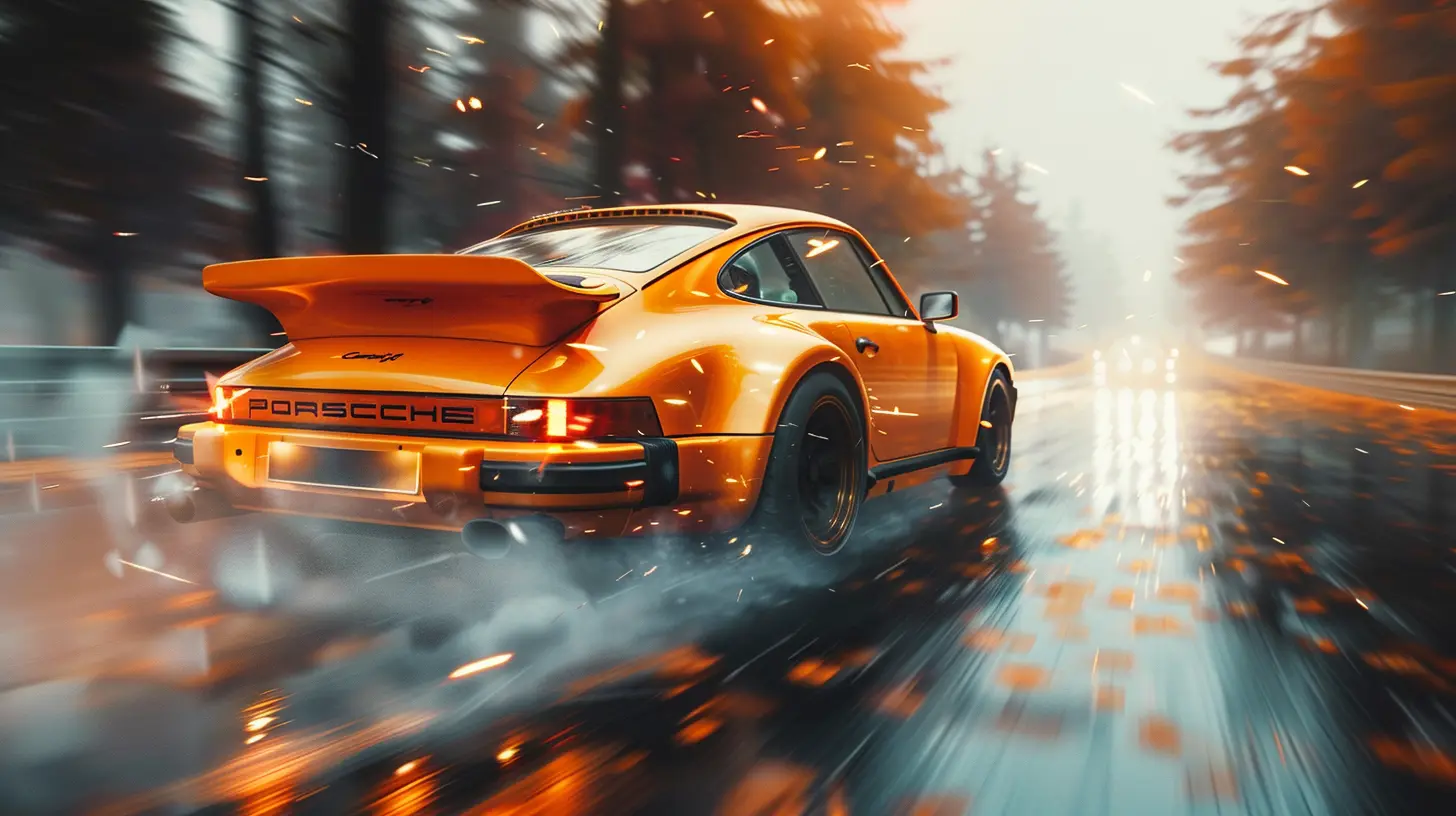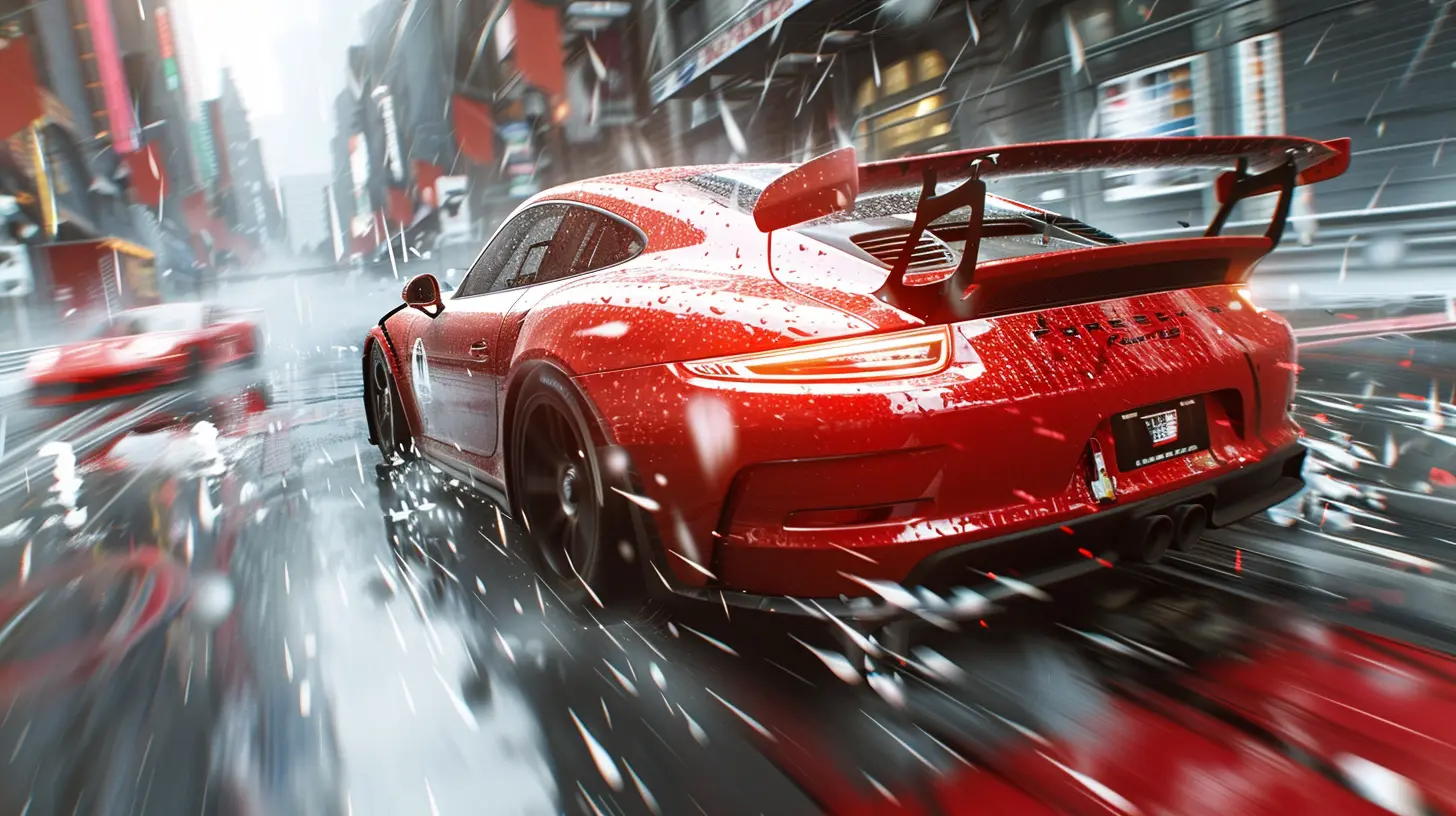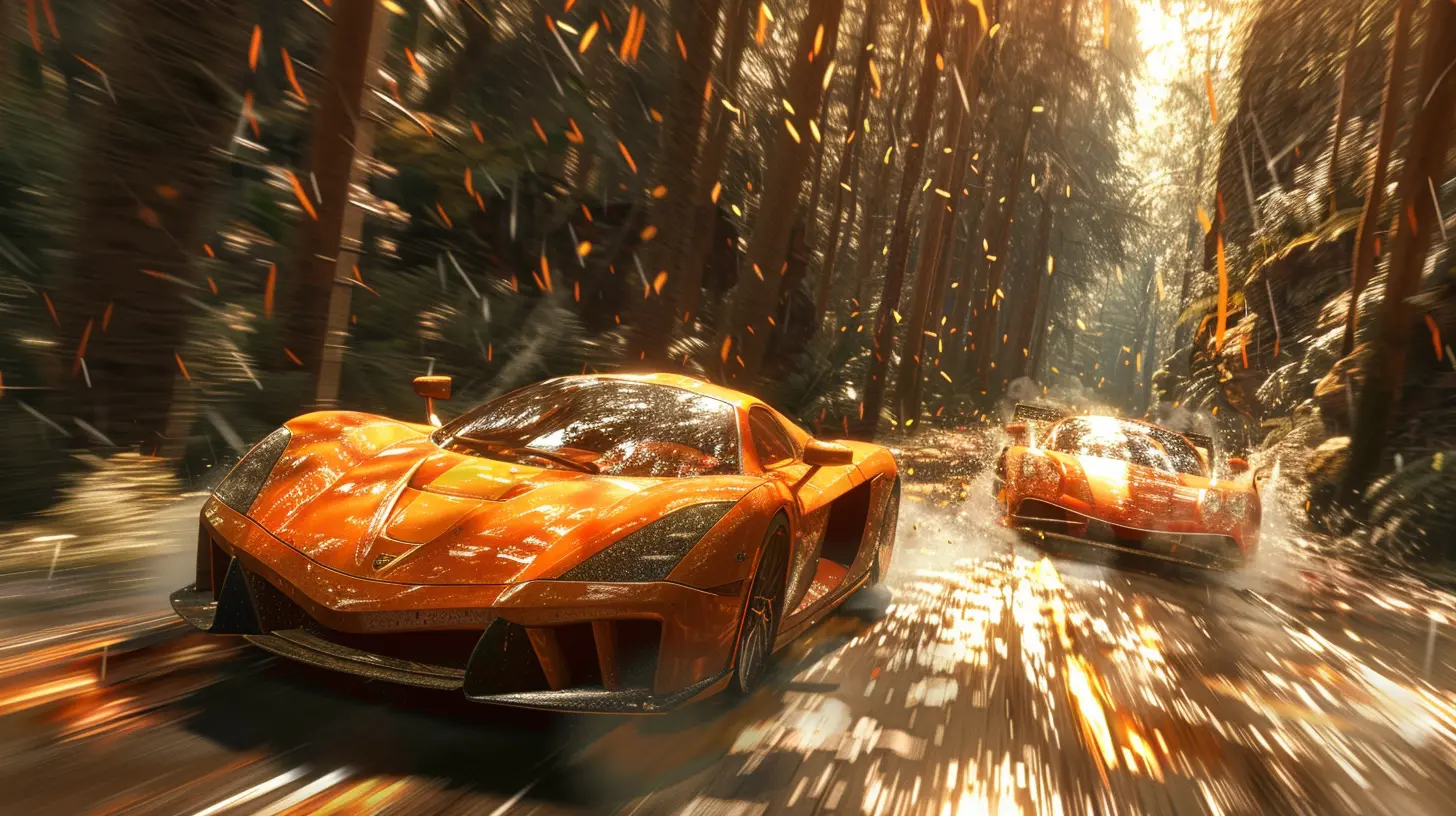Racing Games with the Most Realistic Physics Engines
8 July 2025
If you’re anything like me, there’s nothing quite like the adrenaline rush of flying through a hairpin turn, tires screeching (without waking the neighbors), and knowing your overtake was all you. But here’s the kicker—none of that magic happens if the game’s physics engine feels like you're driving a shopping cart on ice. That’s why today, we’re diving deep into the world of racing games with the most realistic physics engines.
We’re not just talking graphics here. Nope. This is all about how the car feels. The grip, the G-forces, the body roll—stuff that makes you lean in your chair like it actually helps (spoiler: it doesn’t, but we all do it). So buckle up and get ready for a high-octane breakdown of the racing games that absolutely nail realism through physics.
Why Physics Engines Matter in Racing Games
Before we jump into the games, let’s hit the brakes for a second. What even is a physics engine, and why should you care?Imagine playing a racing game where your car floats like a feather after a bump. Or one where braking feels like slamming into a wall of syrup. Frustrating, right? That’s because a good physics engine is what gives a racing game its soul. It’s the invisible force behind realistic suspension, vehicle dynamics, tire behavior, and even weather impact. Without it, you’re basically playing an arcade game in a simulation disguise.
So, the better the physics engine, the closer you get to feeling like you're actually behind the wheel of a real car. And for racing buffs, that’s the dream.
The Heavyweights: Games That Nail Real-World Physics
Let’s hit the track and talk about the heavy hitters that bring real-world physics into our living rooms.1. Assetto Corsa (and Assetto Corsa Competizione)
You can’t have a convo about racing realism without mentioning Assetto Corsa. This game is basically the Holy Grail for sim racers. Why? Because everything from tire temperature to suspension geometry is calculated in real time.The original Assetto Corsa is a masterpiece for modders and solo drivers. The sequel, Assetto Corsa Competizione, focuses more on GT3 racing and ramps up the realism even further. You’ll notice the car reacts differently in cold weather, on wet tracks, or near worn-out tires. That’s not just aesthetics—it’s physics doing the heavy lifting.
Why it stands out:
- Laser-scanned tracks for micrometer-perfect realism.
- A tire model so accurate, it’s used by real-life racing teams for practice.
- Dynamic weather and day-night cycles that affect car handling.
2. iRacing
Think of iRacing as the Harvard of racing sims. It’s serious, competitive, and brutally realistic. The physics engine is continuously updated and is one of the most detailed in the genre.What makes iRacing especially insane is its commitment to accuracy. Every car and track is scanned to perfection, and the vehicle dynamics mimic real-world racing with astonishing precision. If you mess up in iRacing, it’s usually your fault—not the game’s.
Why it stands out:
- Physics updates are based on real-world telemetry data.
- Online-only competition creates a true-to-life racing ecosystem.
- Crashes and vehicle damage affect mechanical performance realistically.
3. rFactor 2
This game is sort of the unsung hero of the simulation world. While it might not win in the eye-candy department, rFactor 2 is arguably one of the most advanced sim racers when it comes to physics.rFactor 2’s tire model isn’t just surface-level. It goes deep—like, molecule-deep. It simulates load sensitivity, wear, heat transfer, and deformation. Basically, your tires feel and react based on what you're doing every second on the track.
Why it stands out:
- Advanced dynamic weather and real-road system.
- Proper implementation of rubber buildup and track temperature.
- Used by professional drivers for training.
4. Project CARS 2
While the third installment shifted more toward arcade gameplay (and broke a lot of hearts), Project CARS 2 stands tall as a blend of simulation and accessibility. It's not as harsh as iRacing but still offers a super realistic driving experience.Its Livetrack 3.0 technology dynamically alters the track surface. Rain falling mid-race changes everything—from braking points to tire choice. And you definitely feel the difference.
Why it stands out:
- Dynamic weather with aquaplaning and puddle formation.
- Vehicle physics change based on surface type—concrete, tarmac, gravel, snow.
- VR and motion rig support for full immersion.
5. BeamNG.drive
Okay, so BeamNG is more sandbox than traditional racing sim, but hear me out. This game’s soft-body physics engine is nothing short of revolutionary. Every bend, crash, and bounce looks and feels insanely real. It might be more about vehicle experimentation, but when it comes to raw physics detail—this game is God-tier.If you’ve ever wanted to understand how weight distribution affects cornering or how differentials react under load, BeamNG is your playground.
Why it stands out:
- Soft-body physics simulate deformation and impact with pinpoint accuracy.
- Fully customizable vehicles with true-to-life mechanical parts.
- Great for learning how cars behave under extreme conditions.
6. Dirt Rally 2.0
Ever wondered what it’s like to fly down a gravel road at 100 mph with only a co-driver’s voice to guide you? Dirt Rally 2.0 makes that madness feel incredibly visceral.The game’s physics engine focuses on surface detail and car weight transfer. Whether you’re skidding through snow or digging into dirt, the feedback and feel are top notch.
Why it stands out:
- Real grip and sliding mechanics depending on surface type.
- Weight transfer and suspension tuning that really matters.
- Force feedback that’ll make your wheel beg for mercy.
7. Gran Turismo 7
While GT isn’t as hardcore as Assetto Corsa or iRacing, Gran Turismo 7 brings an incredible balance between accessibility and realism. It’s like the friendly neighbor that casually mentions they used to be a Formula 1 engineer.GT7 uses the new physics engine Polyphony Digital’s been honing for decades. Tires wear and heat up, weather changes mid-race, and the nuanced handling of every car will win you over.
Why it stands out:
- Physics developed with input from professional race drivers.
- Realistic tire wear, fuel consumption, and aerodynamics.
- Accessible learning curve with a simulation heart.
8. Automobilista 2
This one’s a bit of a sleeper hit. Built on the same Madness engine as Project CARS 2, Automobilista 2 has evolved in its own way, refining the physics to a razor-sharp edge.What’s cool is how it handles less mainstream cars—like go-karts, stock cars, and Brazilian touring cars—with the same respect and detail as F1 machines.
Why it stands out:
- Highly detailed suspension and drivetrain physics.
- Realistic AI and damage modeling.
- Great for experiencing lesser-known motorsport disciplines.
What Makes a Physics Engine Truly Great?
Quick recap—so you know what to look for when someone brags about a game having “realistic physics.”- Tire Modeling: Does the rubber feel alive? Does it heat, wear, and grip differently with time and temperature?
- Suspension Dynamics: Is body roll noticeable? Does your car squat under acceleration?
- Environmental Impact: Do rain or temperature changes affect traction and performance?
- Mechanical Functionality: Feel the difference between front-wheel, rear-wheel, and all-wheel drive?
- Damage Modeling: Do crashes impair your ability to drive realistically?
If a racing game nails all—or most—of these, you’re in for an authentic experience.
Simulation vs. Arcade: Can Realism Be “Too Real”?
Let’s be real—not everyone has a racing rig in their living room. Some folks just wanna drift around and have fun without reading a novel on tire pressure. So is there such a thing as too much realism?Totally.
That’s why games like Forza Motorsport or Gran Turismo strike a balance. They give you a taste of realism without being overwhelming. Meanwhile, games like iRacing or Assetto Corsa are for the purists—the folks who obsess over telemetry data like it’s morning coffee.
So ask yourself: do you want to race or simulate racing? There’s no wrong answer—just different flavors of speed.
Final Thoughts: Which Game Should You Try?
Here’s the deal: the best racing game with realistic physics depends on what you want from the experience.- If you're a hardcore sim racer: Go for iRacing or rFactor 2.
- If you want realism but with some leniency: Try Assetto Corsa or Project CARS 2.
- For rally fans: Dirt Rally 2.0 is a must.
- Want to crash-test your physics degree? BeamNG.drive is your quirky, beautiful chaos.
Ultimately, the most realistic racing game is the one that makes you forget you're sitting in your room and not speeding through Spa-Francorchamps at 200 mph.
all images in this post were generated using AI tools
Category:
Racing GamesAuthor:

Aurora Sharpe
Discussion
rate this article
2 comments
Raegan Edwards
Great article! It's fascinating to see how far racing games have come with realistic physics. Titles like "Assetto Corsa" and "iRacing" truly stand out in simulating real-world driving dynamics. Perhaps exploring how these physics impact player strategies could add an extra layer of depth to your next piece! Keep it up!
November 6, 2025 at 5:36 AM
Zealot McMillen
Embrace the thrill of realism in racing games! These physics engines elevate our driving experience, pushing boundaries and igniting passion. Buckle up and enjoy the ride!
July 18, 2025 at 4:52 AM

Aurora Sharpe
Absolutely! Realistic physics engines truly transform racing games, enhancing immersion and excitement. Buckle up indeed—it's an exhilarating ride!


